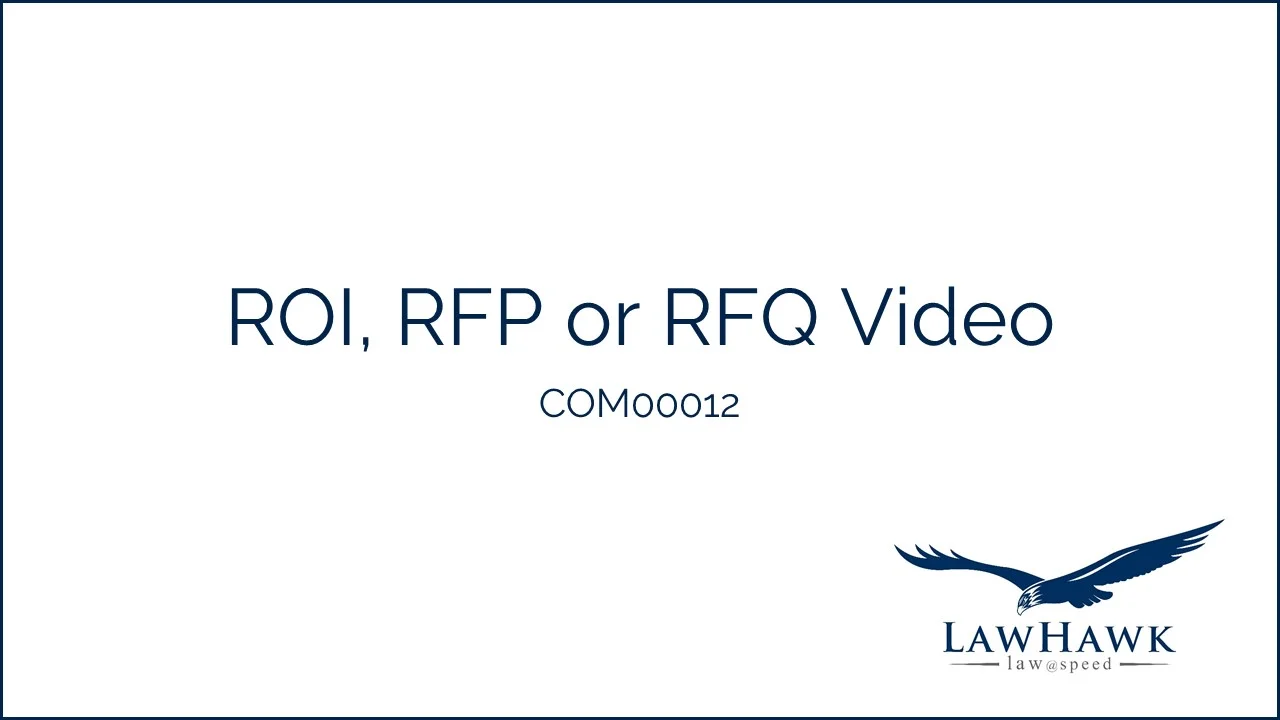Procurement
Automating procurement documents could save significant time and money, particularly if it enables your procurement team to work with less legal support (internal or external) while also having more time to focus on clearly defining requirements, deliverables, and critical requirements for ensuring that the procurement delivers maximum benefits.
Document automation can help your procurement team get substantial hours back in the day.
Use this benefits calculator to test the possible benefits.
Why automate procurement documents?
"I've just spent the last 3 weeks building a spreadsheet so that the procurement team could type the information into the spreadsheet and then give it to me so I can enter it into the proper documents. With this system they could have done it themselves"
- Comment after demonstration of RFx documents and Agreement for Supply of Services
Procurement documents are ideal for automation. Large customers and suppliers usually have their own standard terms, but without automation, there are a number of common problems:
- The documents have too many options. Although this flexibility is needed to make sure the transaction works well in practice, many procurement staff do not have sufficient knowledge and training to use them properly. Or if they do, it either takes too long or they find shortcuts, like working from previous documents rather than the template, to remove some options
- The documents have too few options. To avoid the first scenario, many options are removed. This makes them easy for the user to complete, but in practice “one size fits all” means “one size fits none”, as there is not enough customisation to reflect the particular requirements. In many cases, one sided intellectual property and liability provisions require substantial clarification, negotiation and amendment, and the legal team is required to assist with the drafting
- There’s lots of guidance about how documents are supposed to be used, but users either don’t read it, or don’t follow it, as there is too much, and it’s hard to find the bits that are relevant to the particular issues
- There are lots of documents to maintain, many of which are very similar (e.g. RFP/RFQ, or Master Services Agreement (IT)/(Non-IT)) and could be combined
The benefits of automation
With automation:
- Procurement documents such as ROI, RFP, RFQs can be prepared much more quickly AND to higher standards of quality and consistency
- The process can be automated, so that information from one document (e.g. ROI) can be re-used in later documents (RFP or contract)
- Separate guidance can be incorporated into the questionnaire, so users can find the right information at the right time
- Multiple documents can be combined into one, with the relevant versions controlled via one or two questions
- Users will want to use the right templates as it will be the fastest and easiest way to do a great job
- Users can focus on specifying their requirements and the elements that matter most for successful procurement, reducing bid costs, time-consuming clarifications, and helping ensure that the best bidders respond, and that their bids are the best possible.
Experience LawHawk for yourself
To experience the benefits of document automation for yourself through a free trial, or to discuss how document automation could help you with your procurement, please click the button below:
